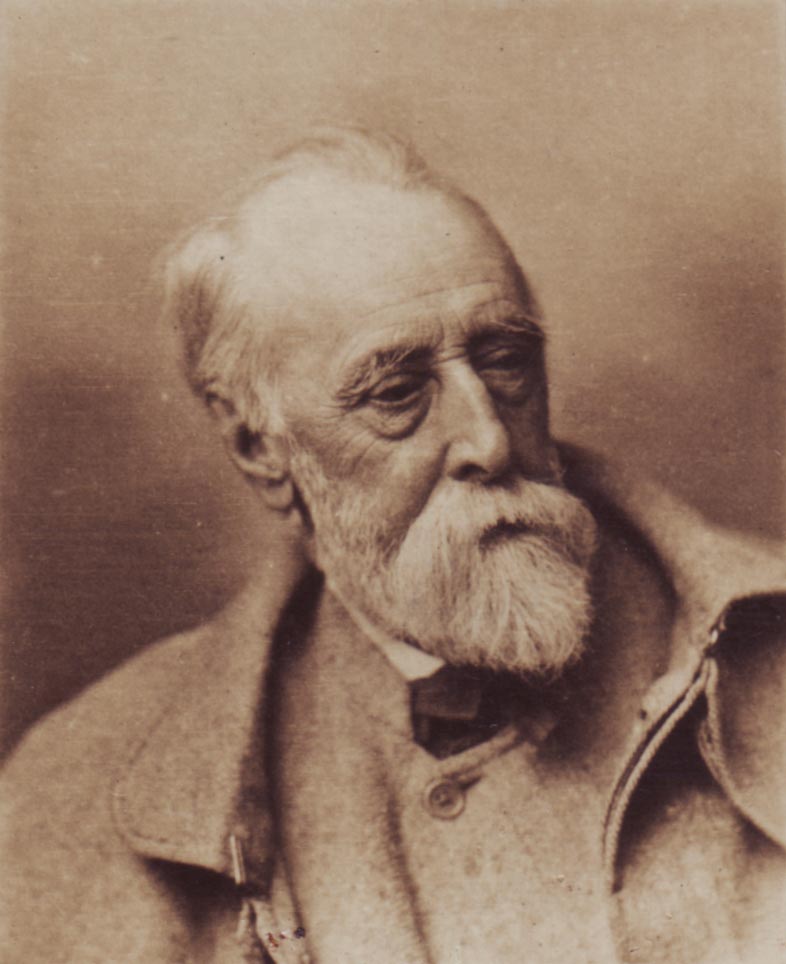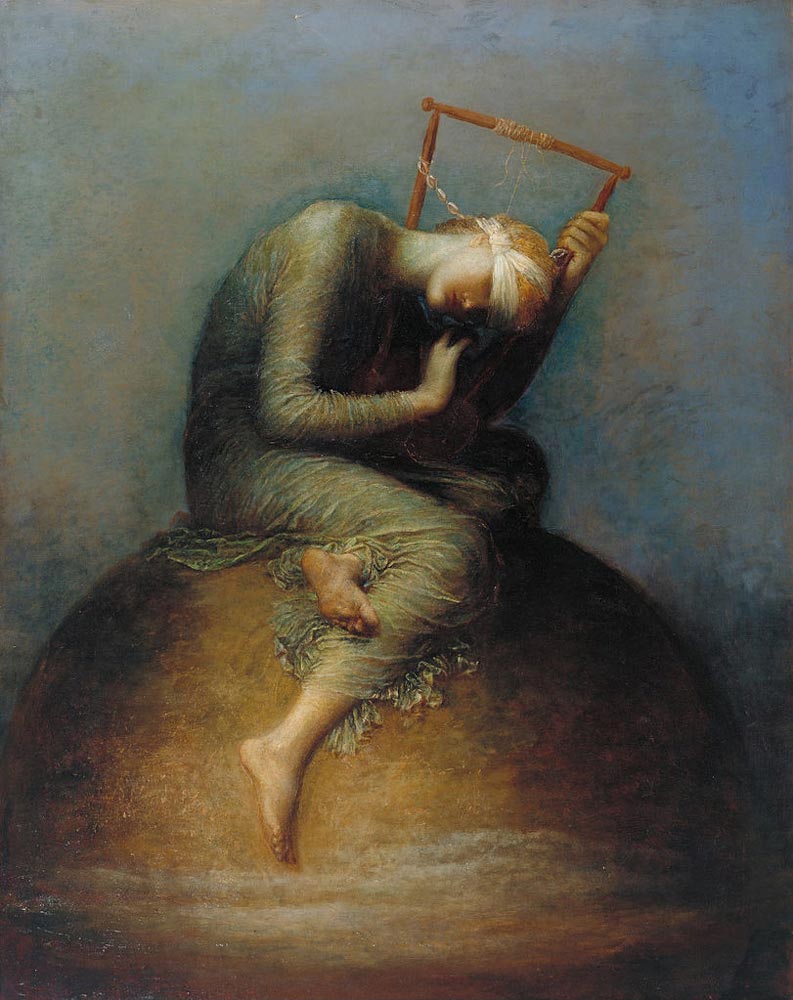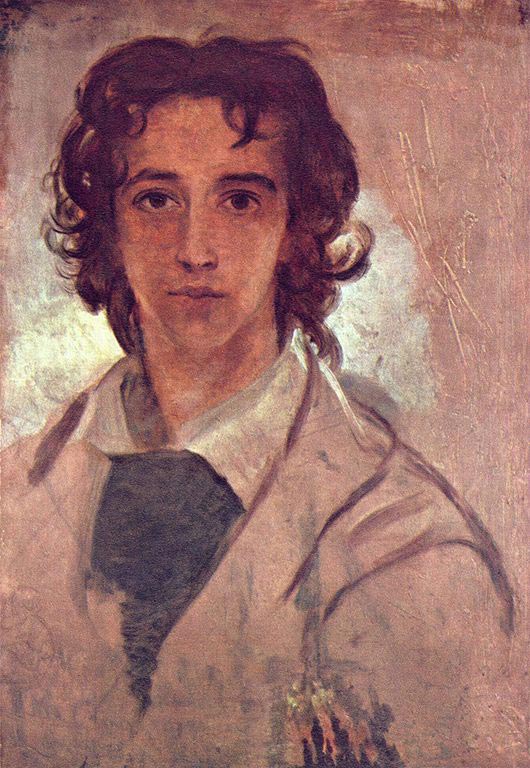| George Frederic Watts | |
|---|---|
 |
|
| Born | Feb. 23, 1817 Marylebone, London, England |
| Died | July 1, 1904 (at age 87) |
| Nationality | British |
| Education | William Behnes Royal Academy |
| Movement | Symbolist |
| Field | Painting, Sculpture |
| Works | View Complete Works Hope Love and Life Physical Energy |
George Frederic Watts (1817-1904) was an English Victorian sculptor and painter, largely known for his contribution and influence on the Symbolist movement. Symbolism was a 19th century art movement that originated in Russian, French and Belgian poetry and artwork.
Watts is also known for a number of allegorical pieces including, Love and Life and Hope. These paintings were meant to culminate as a symbolic cycle referred to as “House of Life.” It was G.F. Watts” intention to portray all of life”s aspirations and emotions in one epic cycle of paintings.
Early Life
George Frederic Watts was born on his namesake George Frederic Handel”s birthday, in July of 1817, to a poor piano-maker and his wife. His delicate health and his mother”s illness led to him being homeschooled by his father. Taught about classic literature, e.g. the Illiad, by a father with a conservative view of Christianity led him away from a life of conventional religiousness and into a career that was often influenced by the Illiad and many other classic works of literature.
Early on in life, Watts showed artistic promise. He learned the art of sculpturing at age 10, in William Behnes” studio, and devoted much of his time to studying the Elgin Marbles. By 18, he had enrolled in the Royal Academy as a student and began his career in portraiture. Another contemporary, Alexander Constantine Ionides, offered him support and encouragement and they eventually developed a close friendship.
Career
 In 1843, Watts entered the public eye when he created a piece called Caractacus, which he entered into a design competition for the new Parliament Houses at Westminster. Despite winning the competition, Watts didn”t make many contributions to the decoration of Parliament Houses. Aside from the publicity that he gained from winning the mural design competition, he earned enough funds to go on a trip to Italy. While staying in Italy, Watts produced a number of landscapes inspired by work in the Scrovegni Chapel and Sistine Chapel.
In 1843, Watts entered the public eye when he created a piece called Caractacus, which he entered into a design competition for the new Parliament Houses at Westminster. Despite winning the competition, Watts didn”t make many contributions to the decoration of Parliament Houses. Aside from the publicity that he gained from winning the mural design competition, he earned enough funds to go on a trip to Italy. While staying in Italy, Watts produced a number of landscapes inspired by work in the Scrovegni Chapel and Sistine Chapel.
Several years later, he returned to London intending to visit only briefly before moving on again. While back in London, he unsuccessfully tried to obtain his own building so that he could create a grand fresco inspired by his experiences in Italy. Instead, he settled for producing a 40ft by 45ft piece on the upper east wall in the Lincoln Inn”s Great Hall. The piece was titled Justice, a Hemicycle of Lawgivers and inspired by Raphael”s work.
Most of Watt”s major pieces are oil paintings. Most of symbolic pieces were intended to become part of the aforementioned House of Life cycle.
 In some of his last paintings, Watts” creative aspirations moved on from Michelangelo, Rossetti and other obvious influences into mystical imagery, as seen in The Sower of the Systems. In this piece, Watts appeared to anticipate the arrival of abstract art, as the painting depicts a Godlike entity as a shape that is barely visible amongst an energized star/nebulae pattern. Other late paintings also bring to mind Picasso”s Blue Period works.
In some of his last paintings, Watts” creative aspirations moved on from Michelangelo, Rossetti and other obvious influences into mystical imagery, as seen in The Sower of the Systems. In this piece, Watts appeared to anticipate the arrival of abstract art, as the painting depicts a Godlike entity as a shape that is barely visible amongst an energized star/nebulae pattern. Other late paintings also bring to mind Picasso”s Blue Period works.
Throughout his life, Watts produced a vast number of portraits and is well-known for being adept at portraiture. Dante Gabriel Rossetti, George Meredith, the Countess of Rosebery, Hannah Primrose and George Robinson are just some of the famous faces that had their portraits painted by Watts. Watts created oil portraits of many people that were deemed important, intending to create another cycle of paintings, “The House of Fame.”
Later Life
In 1891, Watts bought some land south of Guildford, near Compton, in Surrey. The Watts Gallery, built near their home, was opened in 1904 shortly before Watts passed away. The Watts Gallery, a museum that is dedicated to his life”s work, was the first museum of its kind. The gallery is the only purpose-built museum in the whole of the UK that is dedicated to showcasing the work of just a single artist. He continued to produce pieces of art until shortly before he died; his copy of All-Pervading was painted for the Watts Mortuary Chapel just 3 months before.
In his final years, George Frederic Watts turned his hand to creating sculptures. His most famous sculpture is the large-sized bronze statue named Physical Energy that was created in 1902. The statue depicts a naked horseman shading his eyes as he looked into the sun. Watts” intention was to dedicate the piece to Genghis Khan, Muhammad, Attila and Tamerlane – figures that Watts thought epitomized raw willpower.